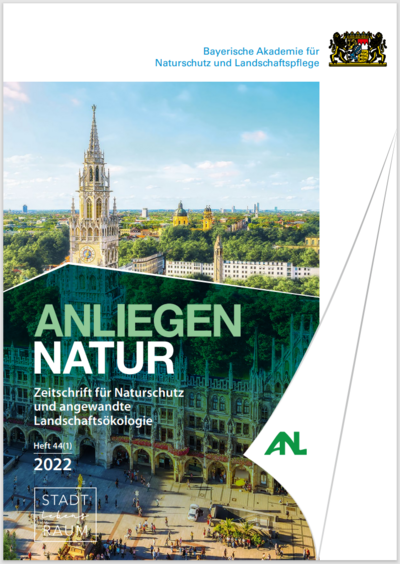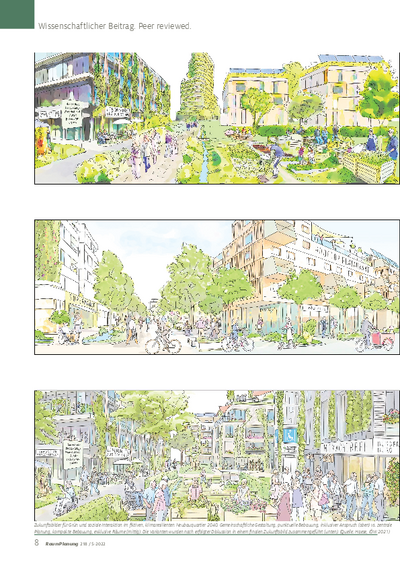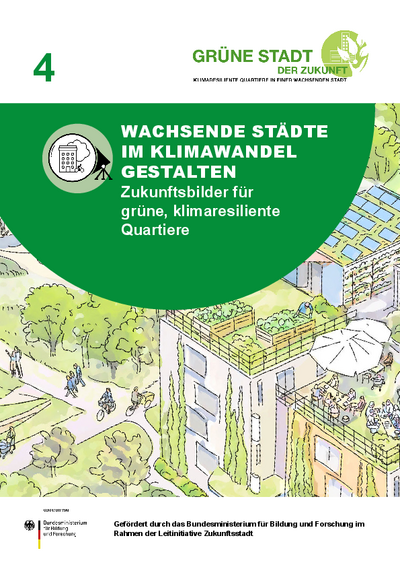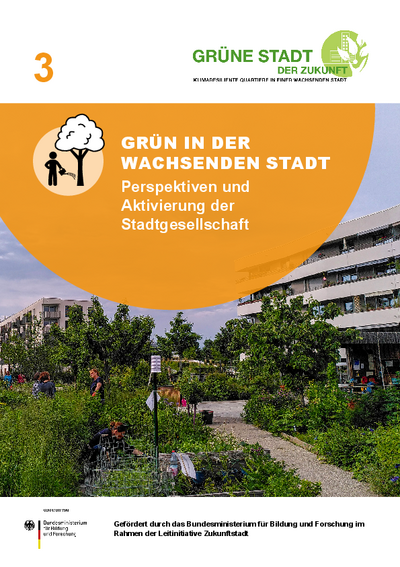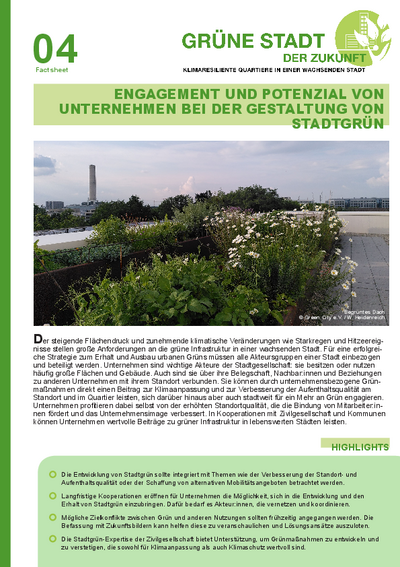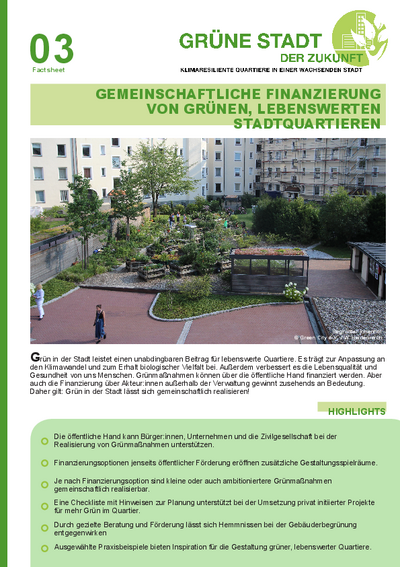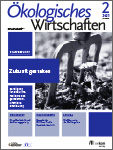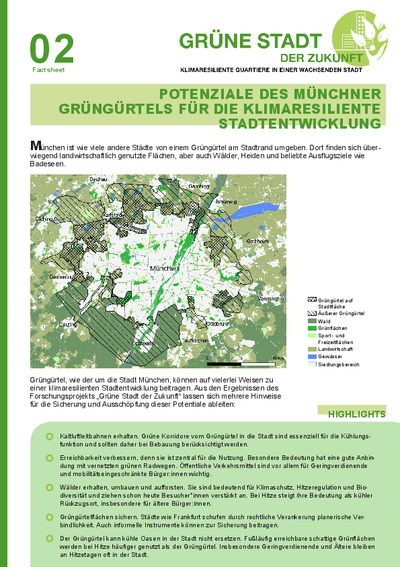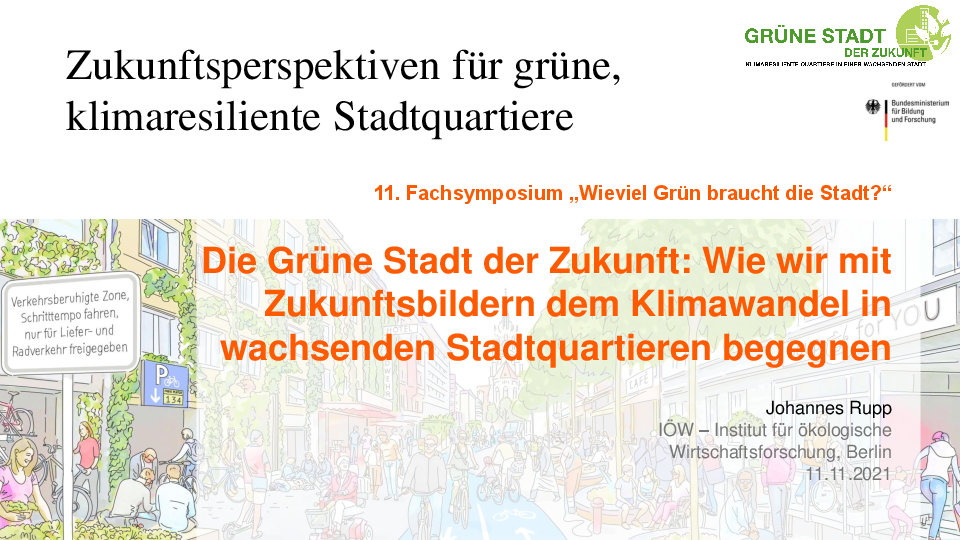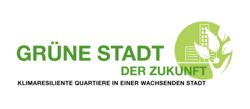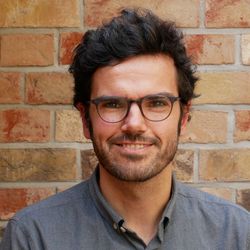Green City of the Future – Climate-Resilient Neighborhoods in a Growing City Subproject: Analysis of social and economic aspects of green infrastructures
Many German cities experience a significant population growth due to their attractive working and living environment. The consequence is a higher space consumption, triggered by increasing construction activities in the housing and commerce sector and by the development of central infrastructures, i.a. in the mobility sector. The associated phenomenon of densification, primarily in inner city areas, causes an increased pressure on green and open spaces as well as on the quality of life in our cities. A “green” urban development should therefore address diverse ecological and social challenges and, at the same time, it should create integrated solutions to preserve and improve green infrastructures in our cities.
The joint project “Green City of the Future” was funded by the Federal Ministry of Education and Research as part of its flagship initiative “Future City” (“Leitinitiative Zukunftsstadt”). The Project pursued the main goal of supporting green infrastructures in densely populated urban structures, i.e. to preserve and improve green and open spaces and to include them in urban planning processes. In the future, green and open spaces will increasingly have to fulfill a number of requirements: They should be multifunctional and be connected across the area of a neighborhood or the entire city.
For densification processes in many cities, the project developed solutions for the design of green and open spaces, particularly in the context of climate change adaptation and climate protection.
The spatial focus of the investigations was the Bavarian State Capital Munich as well as selected neighborhood within the city. In the project, the IÖW analyzed social and economic aspects of green infrastructures with a focus on creating climate-resilient inner developments. In detail, the researchers analyzed how green, climate-resilient neighborhoods could look and be designed in the future based on the neighborhood-specific development of future visions. In addition, they analyzed entrepreneurial engagement in the field of corporate citizenship, as well as suitable formats for activating individual groups of actors and financing options for selected measures of green infrastructures. To consider economic aspects of green infrastructure, the project team determined the value of urban green space for recreational purposes through a representative population survey. The researchers also discussed current barriers to the implementation of greening measures with building owners and identified possible solutions, such as better design of funding programs and advisory services.
The results of the project were prepared in the form of brochures, factsheets and videos and made available to the public (see below). The developed future visions for green, climate-resilient neighborhoods are available to interested persons. The visions support the exchange on desirable future developments, as well as on conflicting goals and possible solutions.
In a two-year implementation and stabilization phase, the results of the research and development phase have been transferred into practice. In the project "Green City of the Future II", the IÖW focused on the development of educational modules and formats. The results can be found on the website www.gruene-stadt-der-zukunft.de.
Special thanks goes to the colleagues of the association Green City e.V. from the field of Urban Green in Munich. They have supported and enriched the project "Green City of the Future" with great commitment and with many practical hints.
Videos with images of the future and food for thought
- YouTube-Video "Die Grüne Stadt der Zukunft" (only in german)
- Videotrailer with key messages (only in german)
Future visions for green, climate-resilient neighborhoods
Using narratives and illustrations, the researchers developed impulses for visions of the future for three different types of neighborhoods. After discussion with local stakeholders, the future visions were brought together to one vision.
All illustrations are available for download on Flickr and can be used with reference to "IÖW / V. Haese 2021" for your own work and exchange with others.
Existing neighborhood: Close to the main railway station in Munich
- Conclusion (PDF, 0,8 KB) (only in german)
- Impulse paper (PDF, 1,6 MB) (only in german)
Commercial district: 'Neumarkter Straße' in Eastern Munich
- Conclusion (PDF, 0,8 KB) (only in german)
- Impulse paper (PDF, 1,6 MB) (only in german)
New housing development: fictitious case study
- Conclusion (PDF, 1,0 MB) (only in german)
- Impulse paper (PDF, 1,7 MB) (only in german)
Further publications,brochures and factsheets of the project can be found here (in German language).
IÖW Project Team
- Dr. Alexandra Dehnhardt
- Marlen Ihm
- Gilles Jean-Louis
- Patrick Schöpflin
- Dr. Malte Welling
- Sarah Wutz
- Dr. Carla Young



